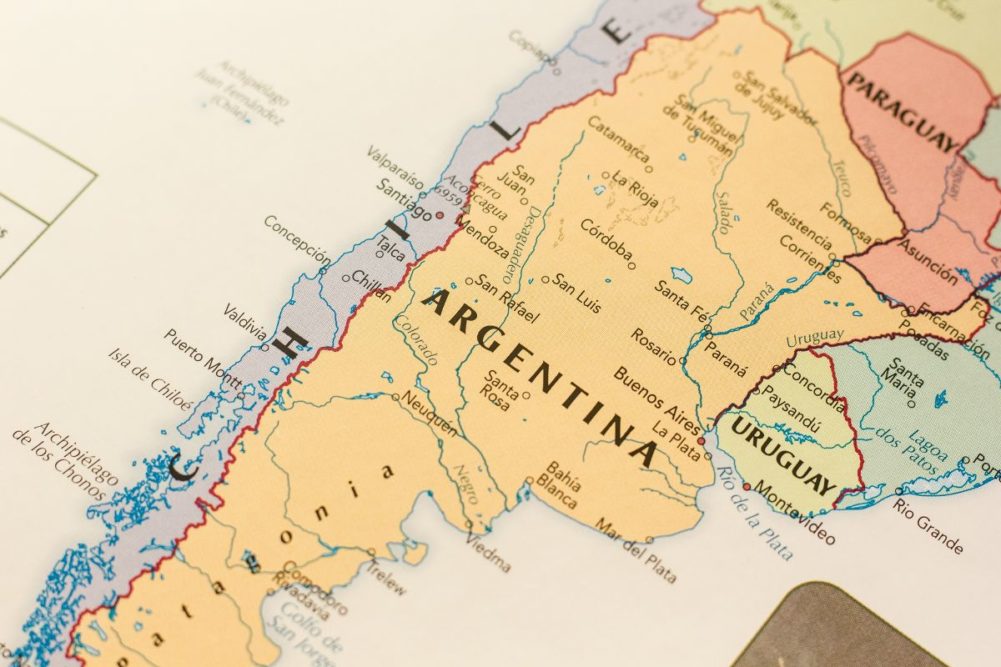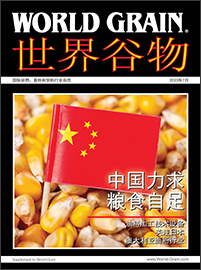LONDON, ENGLAND – Argentina is one of the world’s most important exporters of grains and oilseeds, playing an important role in feeding populations around the world. The South American country, which has a milling sector that includes some major processors, is also a big player on the global biofuels market.
In its Grain Market Report of Oct. 20, the International Grains Council (IGC) put Argentina’s total grains production in 2022-23 at 87.1 million tonnes, revised down from its forecast a month earlier of 88.1 million. The total compares with production of 88 million tonnes in 2021-22.
The country’s total wheat output is forecast at 17.5 million tonnes, revised down from 18 million, compared with 22.1 million in 2021-22.
“Drought concerns have intensified in Argentina, where crop vegetation densities are below normal,” the IGC said.
The durum wheat crop is put at 300,000 tonnes, unchanged from the previous month’s forecast and the previous year’s crop.
The forecast for Argentina’s maize production in the current marketing year is 60.6 million tonnes, an unrevised figure, which is up from the 57 million tonnes produced the previous year.
Barley output is forecast at 5 million tonnes, revised down from 5.5 million and just below the previous year’s crop of 5.2 million tonnes.
“Amid lingering moisture deficits, winter cropping conditions in Argentina have worsened in recent weeks, with unusually poor vegetation density noted in some areas,” the IGC said.
In addition to a deteriorating yield outlook, there also are risks of increased abandonment.
The sorghum crop is put at 3.1 million tonnes, unchanged from the forecast a month earlier and up on 2.8 million the previous year.
Argentina also is slated to produce 700,000 tonnes of oats, an unrevised figure that is unchanged from the previous season. Its rice crop is put at 800,000 tonnes, also unrevised from the previous IGC report and unchanged from the year before.
The IGC forecasts Argentina’s total grains exports in 2022-23 at 57.2 million tonnes, revised down from 57.9 million, and down from 67.9 million tonnes the year before. These numbers put the country as second to the United States in grain export volume.
Argentina’s wheat exports are forecast at 12 million tonnes, revised down from 12.5 million forecast earlier, and down on the previous year’s total of 18.7 million tonnes. Forecast maize exports are unrevised at 39.2 million tonnes, down from 42.7 million the previous year. Barley exports are forecast at 3.7 million tonnes, revised down from 4 million forecast a month earlier and the previous year’s export level of 4 million. All three figures include 600,000 tonnes of malting barley, with the rest for feed. Exports of sorghum in 2022-23 are put at 2.3 million tonnes, revised up from an earlier forecast of 2.2 million, but down on the 2.4 million exported the previous year.
Rice exports are forecast at 300,000 tonnes in 2023, a figure the IGC has not revised since its previous report, and which compares with 400,000 tonnes exported in 2022.
Argentine production of soybeans in 2022-23 is forecast at 48 million tonnes, unrevised from the previous month’s prediction and up from 44 million the year before.
Production of sunflower seed is put at 4.4 million tonnes, revised down from 4.5 million forecast a month earlier, with the previous year’s crop at 4 million.
Exports of soybeans are forecast at 5.2 million tonnes, revised up from 4.6 million in the previous IGC report and up on the previous year’s shipments of 3.4 million.
In an annual report on the grains sector, the USDA attaché explained why farmers might be inclined to limit wheat planting.
“Despite high wheat prices, which increased almost 50% in dollar terms from a year ago, returns on rented land are expected to be very tight in most cases,” the report said. “There are many factors that are playing against an increase in planted area.”
The report highlighted an additional $200 cost per hectare from the rise in fertilizer prices.
“As wheat demands a large investment at a time where financing has gotten more expensive, farmers may opt for a crop with lower input expense,” the report said. “Wheat costs are significantly higher than those of soybeans, while wheat’s expected return is less than half.
“There is currently a strong interest in alternative winter crops, such as peas, canola and barley that do not have the government price controls that have been imposed on wheat. The Argentine government influences the local wheat market using several economic tools in an attempt to keep domestic bread and pasta prices low despite rising grain prices. Because of these interventions, farmers are not receiving international market value. These measures are in addition to the 12% tax on wheat exports.”
According to information published by the Rosario exchange (Bolsa de Comercio de Rosario) in December 2021, wheat is processed in 285 milling plants across the country. However, Molinos Cañuelas SACIFIA, the biggest company in the sector, has a share of production that reached 22.4% in 2020-21, making it the only sector company to reach over 10%.
The 11 largest companies (Molinos Cañuelas SACIFIA, plus Molinos Fénix, Molinos Florencia, Lagomarsino, Molinos Juan Semino, Molino Argentino, Molino Chacabuco, Molinos Cabodi Hnos, Molino Chabas, O.S.S.A., and Morixe Hermanos) were responsible jointly for 44% of processing during that year.
The exchange’s experts explained that most of Argentina’s flour mills are in the province of Buenos Aires, with more than 53% of production in 2020-21, followed by Córdoba at 21% of total milling and Santa Fe at 14%. They put total 2020-21 flour production at 4.6 million tonnes.
Argentina is a significant exporter of wheat flour, with shipments during 2022-23 forecast by the IGC at 600,000 tonnes, compared with 741,000 tonnes in 2021-22.
In an annual report on the biofuels sector, the attaché said Argentine ethanol consumption for 2022 is forecast at a record 1.1 billion liters due to the combination of increased gasoline demand and a higher blend rate, close to the maximum official blend rate.
“Biodiesel production in 2022 is projected to continue to recover after two very poor years caused by low overall diesel demand during the COVID-19 pandemic,” the report said. “Greater domestic consumption could more than offset somewhat lower biodiesel exports to the EU.”
Argentina is one of the leaders on the use of genetically modified crops, with the attaché noting in a report of Dec. 30, 2021, that 2021 marks 25 years since the first Genetically Engineered (GE) crop was approved in Argentina in 1996.
“The GE adoption process began in 1996 with the introduction of herbicide tolerant soybeans, and since then it has shown an unprecedented growth in area planted: 100% of soybeans, 99% of corn and 100% of cotton planted in Argentina are GE,” the report said. “On Oct. 7, 2020, Argentina became the first country in the world to approve GE wheat when the GOA approved HB4 Eco Wheat from the Argentine company Bioceres Crop Solutions.”
The full approval, including for processing and commercial sale, was contingent on approval from Brazil, which approved flour derived from the wheat in November 2021, although the report noted “concerns from Brazilian millers’ associations,” while Argentine farmers and exporters organizations were concerned about the effect on wheat exports to other markets.





